On Friday, I once again made the 13-hour drive from Bellingham down to Gerlach, Nevada to watch the next series of tests of the North American Eagle land speed record challenger.
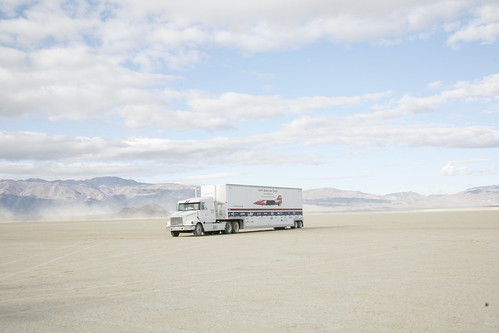
Saturday morning, the team met for breakfast at Bruno's at 6am and then headed out onto the playa. It was an absolutely beautiful morning, although a bit chilly. We met about a mile out from the 12-mile entrance and then moved about 8 miles out toward the north east.
It' hard to describe just how vast this place is. From two miles away, cars and people vanish below the horizon. If you don't know where you can easily get lost out here.
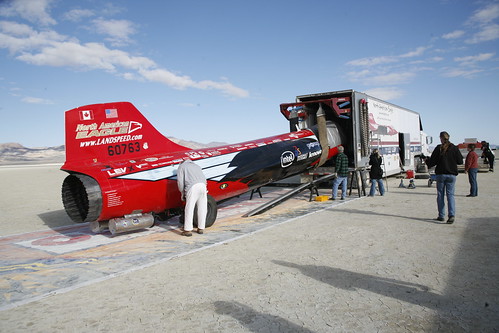
By 7:30am, the trailer is in position and the team begins the process of unloading the Eagle vehicle from its trailer, attaching the huge aluminum wheels, adding fuel, and hundreds of other steps before the vehicle is ready for a test run. In the meantime, I help Steve Wallace to erect the antennas that will be used as part of the ethernet network to capture real-time telemetry from the vehicle as it hurtles across the desert.

By noon, most of the preparations have been made, and the temperature has climbed into the upper 40's under a mostly clear sky. But it still takes hours more before everything is ready.

In spite of all the advanced preparations, it's still nearly sundown on Saturday before Ed Shadle makes his first and only test run of the day, reaching a top speed of around 185mph. Once again, just like back in July, the after burner refuses to ignite. And at the end of the run, the high-speed parachute fails to deploy and Ed brings the Eagle to a stop using only the magnetic brakes.
On Sunday morning, we again meet at 6am for breakfast and then head out into the desert. It's absolutely freezing this morning. The temperature is 18-degrees. When I get to base camp, I have to plug my camera battery charger into a small generator and recharge, because the cold has completely sapped most of my batteries.
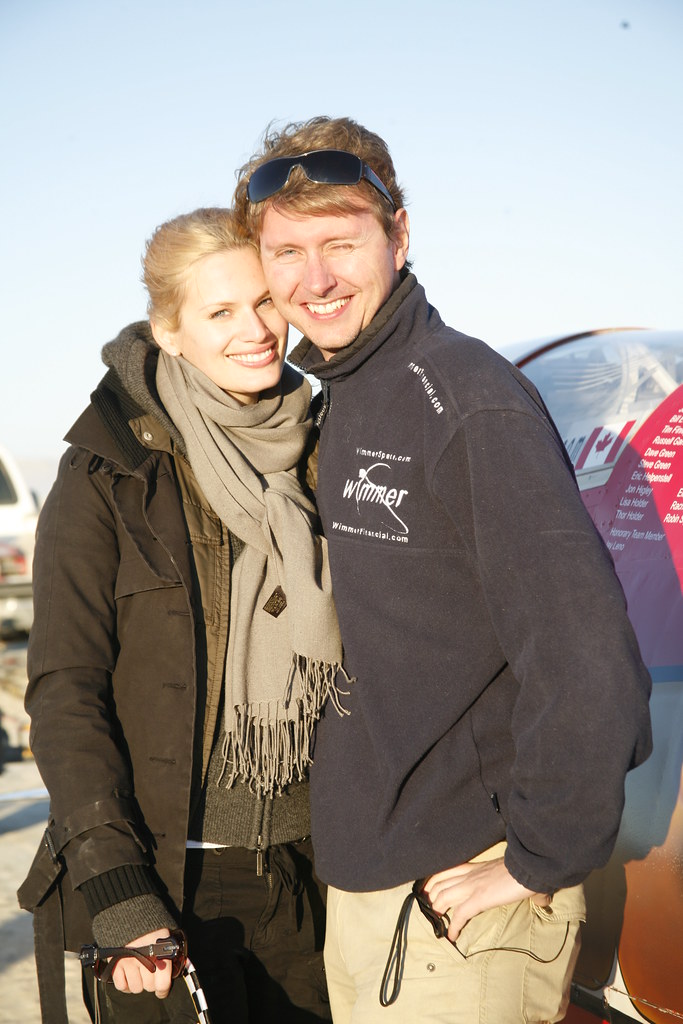
With us again is Per Wimmer of Wimmer Financial. It appears that he is going to become a major North American Eagle sponsor. He's here this time with his girl friend Vicky, a Swedish fashion model. After getting some land speed experience at Bonneville this summer, Per is going to make a test run today.
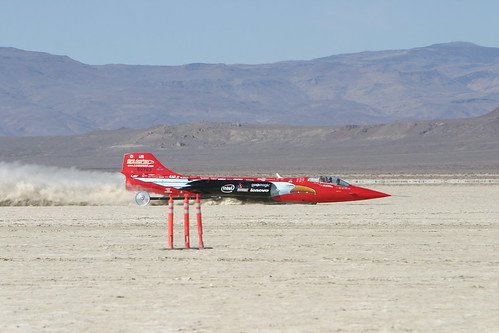
It's after noon before everything is ready for the next test run. Jon Higley and I drive out to the 2 mile marker and wait. Finally, we can hear the big J-79 jet engine start up and a few minutes later Per comes roaring by. He appears to be going a bit faster than Ed's run yesterday. Just as he comes by us, however, he hits a bump in the playa and the Eagle makes a big bounce.
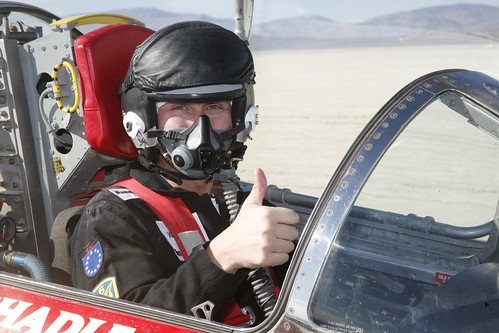
After the Eagle flies past, Jon and I jump into my Subaru and race across the desert at 80mph. When we pull up alongside the vehicle, we can see Per's huge grin even through his face is still mostly hidden behind his oxygen mask.

Al Von Hollen of S&S Turbine Services is concerned about the amount of desert dust that has been sucked up into the jet engine. There's a lot of dust visible in the tail cone. If there's that much here, just imagine how much is inside the engine.

When we get back to base camp, Per gets interviewed for Danish television.
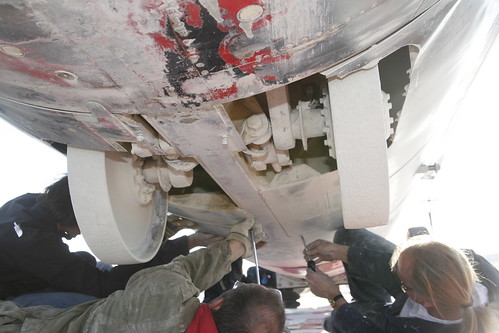
It turns out that the bump was even more severe than we thought. The Eagle bottomed out and the impact tore away a metal panel just in front of the center wheels on the left side, along with a piece of the door panel. There's too much damage to risk another run. So after just two test runs, the team begins the process of dismantling the vehicle and loading it back into its trailer for the long drive home.
After saying goodbye to everyone, I load up and start my 13-hour drive back to Bellingham, arriving home around 5:30am on Monday morning. The team will now have to work through the winter making repairs and other modifications to the North American Eagle before the next test runs and hopefully a record attempt next summer.













